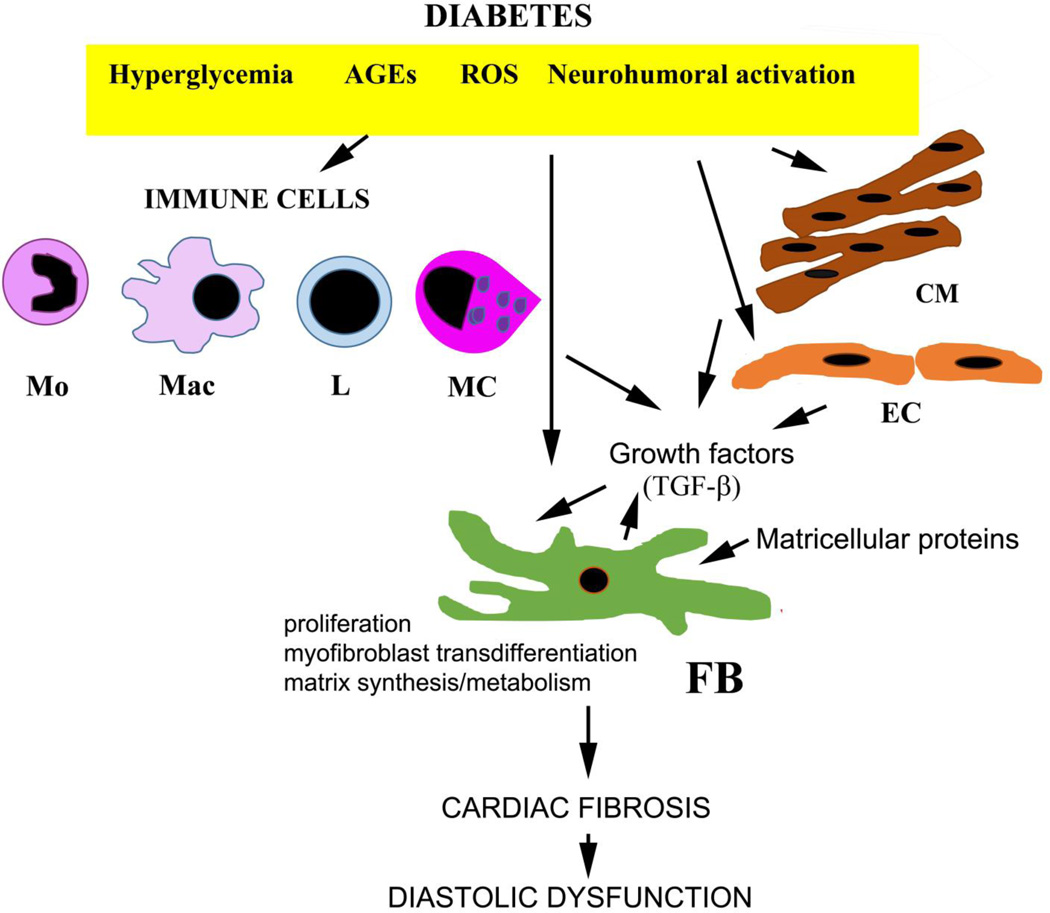Figure 2.
The cell biology of diabetes-associated cardiac fibrosis. Diabetes-associated hyperglycemia, generation of advanced glycation end-products (AGEs) and reactive oxygen species (ROS) and neurohumoral activation directly activate resident cardiac fibroblasts and may induce a proliferative response and a matrix-synthetic phenotype. Induction and activation of fibrogenic growth factors (such as TGF-β) may play an important role in fibroblast stimulation. Immune cells (monocytes/Mo, macrophages/Mac, lymphocytes/L and mast cells/MC) may contribute to the fibrotic response by secreting pro-fibrotic mediators. Cardiomyocytes (CM) and endothelial cells (EC) may also secrete growth factors and modulate fibroblast phenotype. Endothelial cells and pericytes may transdifferentiate into fibroblasts contributing to the expansion of the fibroblast population in diabetic hearts. Deposition of matricellular proteins (such as thrombospondin-1) in the diabetic myocardium may promote a pro-fibrotic phenotype in interstitial cells.

